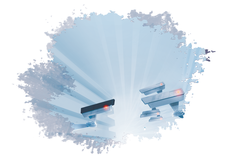Ubuntu for the security conscious
Private Island

Worried about spies and criminals? Ubuntu Privacy Remix breaks down all the bridges to the Internet and converts the computer into an island of security. If you want to head back to civilization, you'll need a USB stick and plenty of patience.
The effect of global monitoring has shocked even the most paranoid of users, but what can you do to protect particularly sensitive data? Make life as difficult as possible for the secret services says security expert Bruce Schneier [1]. This advice also helps protect you against attackers with criminal interests who are capable of demonstrating a huge amount of skill when it comes to retrieving data from other people's computers.
To help users defend themselves against both attackers and spies, Ubuntu offers its Ubuntu Privacy Remix (UPR) [2]. Just a few months ago its feature descriptions caused much hilarity among large parts of the computer-savvy universe: no access to the Internet, no install option, and no access to the hard disk!
If you take another look at the project, however, which was launched in 2008, with the benefit of hindsight, these features no longer sound so absurd. What use is hard drive encryption if spyware leverages various attack vectors, such as downloads, zero-day exploits, backdoors, or routers to infect your computer? Without write access to the hard drive, installing malware is infinitely more difficult, and the lack of Internet access takes care of the rest. To let you save files without hard drive access, Ubuntu Privacy Remix 12.04, which is currently still in beta, offers a USB flash drive solution based on TrueCrypt [3]. (Of course, no computer system is completely secure, and this includes URP – see the box titled "Caveats.")
[...]
Buy this article as PDF
(incl. VAT)
Buy Linux Magazine
Subscribe to our Linux Newsletters
Find Linux and Open Source Jobs
Subscribe to our ADMIN Newsletters
Support Our Work
Linux Magazine content is made possible with support from readers like you. Please consider contributing when you’ve found an article to be beneficial.

News
-
Linux Mint 22.3 Now Available with New Tools
Linux Mint 22.3 has been released with a pair of new tools for system admins and some pretty cool new features.
-
New Linux Malware Targets Cloud-Based Linux Installations
VoidLink, a new Linux malware, should be of real concern because of its stealth and customization.
-
Say Goodbye to Middle-Mouse Paste
Both Gnome and Firefox have proposed getting rid of a long-time favorite Linux feature.
-
Manjaro 26.0 Primary Desktop Environments Default to Wayland
If you want to stick with X.Org, you'll be limited to the desktop environments you can choose.
-
Mozilla Plans to AI-ify Firefox
With a new CEO in control, Mozilla is doubling down on a strategy of trust, all the while leaning into AI.
-
Gnome Says No to AI-Generated Extensions
If you're a developer wanting to create a new Gnome extension, you'd best set aside that AI code generator, because the extension team will have none of that.
-
Parrot OS Switches to KDE Plasma Desktop
Yet another distro is making the move to the KDE Plasma desktop.
-
TUXEDO Announces Gemini 17
TUXEDO Computers has released the fourth generation of its Gemini laptop with plenty of updates.
-
Two New Distros Adopt Enlightenment
MX Moksha and AV Linux 25 join ranks with Bodhi Linux and embrace the Enlightenment desktop.
-
Solus Linux 4.8 Removes Python 2
Solus Linux 4.8 has been released with the latest Linux kernel, updated desktops, and a key removal.

